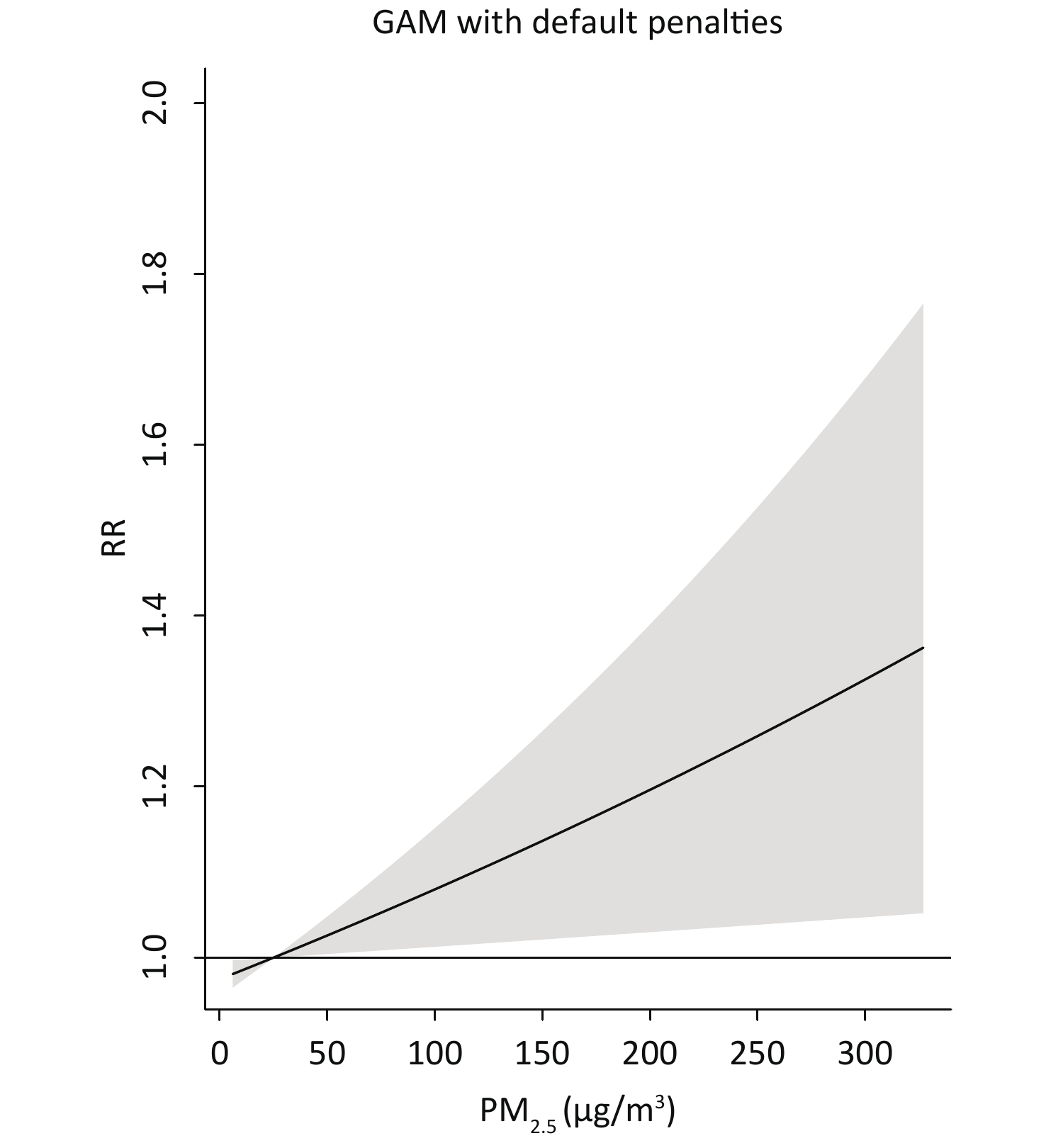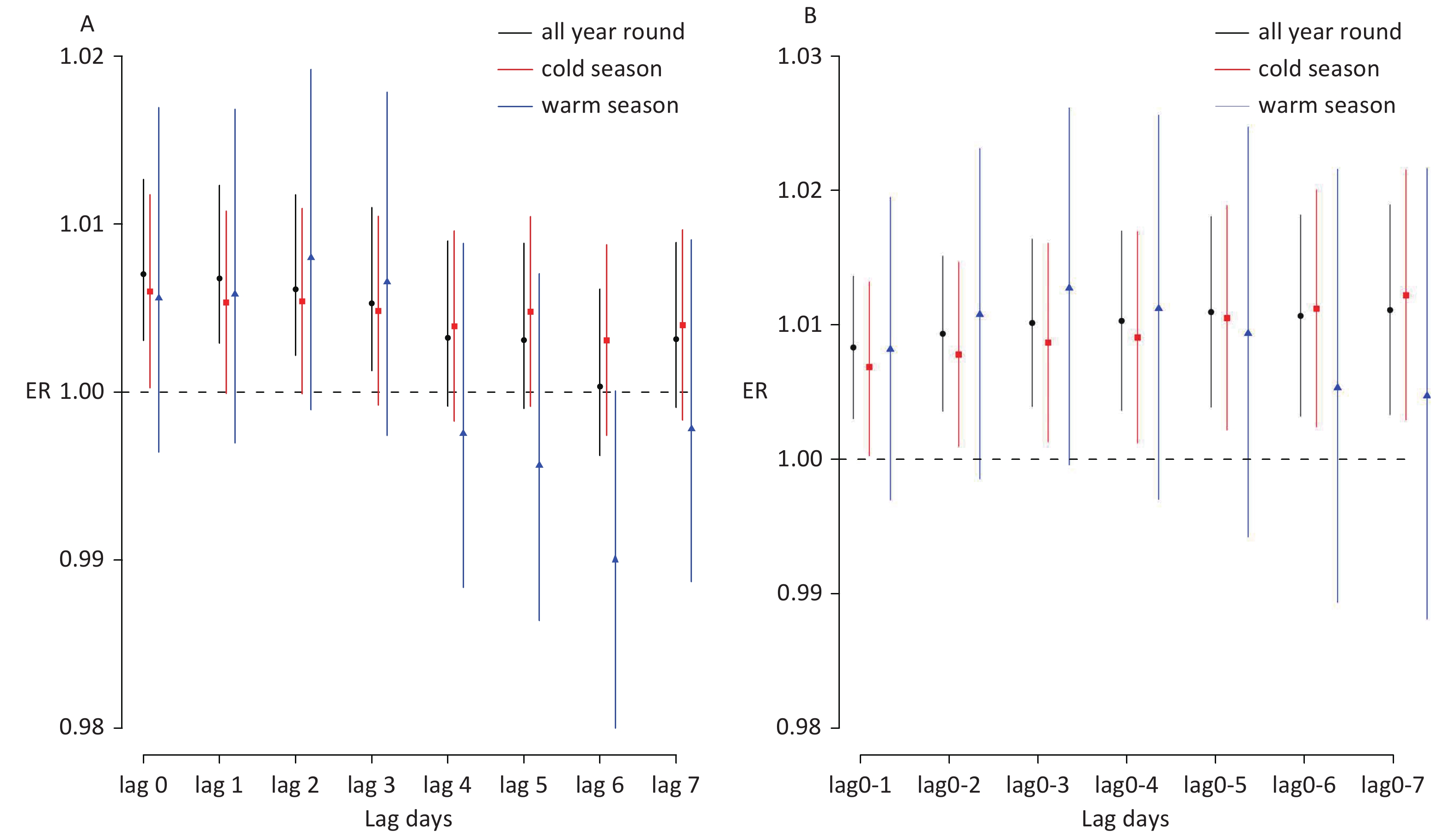-
Lung cancer is one of the most common types of cancer worldwide in terms of incidence, and it is the leading cause of cancer death. Many etiologic factors for lung cancer tumorigenesis have been identified to date, such as smoking and exposure to radon, cooking fumes, and asbestos[1]. A growing body of evidence indicates that particulate matter 2.5 (PM2.5) is associated with lung cancer incidence[2]. Furthermore, PM2.5 exposure after lung cancer diagnosis also shortens patient survival[3]. The health impacts of environmental PM2.5 exposure may not manifest at the time of measurement, may be delayed, or may be prolonged. The distributed lag non-linear model (DLNM) has been frequently used in time series environmental health research, but it has seldom been applied to the evaluation of the relationship between short-term exposure to PM2.5 and death from lung cancer. Thus, we performed a time-series study using DLNM to explore the correlation between relatively short-term exposure to PM2.5 and the risk of lung cancer death in a Chinese population.
Daily mortality data from January 1, 2013, to December 31, 2017, were obtained from the Nanjing municipal center for disease control and prevention; the dependent variables were obtained from the ‘China Disease Detection System Death Monitoring Network Report Database’. The data of the subjects including sex, age, permanent living address, date of death, and cause of death, were collected. According to the International classification of diseases 10th version (ICD-10) (http://apps.who.int/classifications/icd10/browse/2016/en), lung cancer was defined by the code ICD-10 C33–34. Daily mean air pollutant data on PM2.5, sulfur dioxide (SO2), carbon monoxide (CO), nitrogen dioxide (NO2), and ozone (O3) were obtained from Nanjing environmental monitoring center. Daily meteorological data including daily mean temperature, mean relative humidity, and mean air pressure were collected from the China meteorological sharing service system network (http://cdc.cma.gov.cn/home.do) during the same period as collection of the mortality data.
We established a fundamental model based on the DLNM to examine the non-linear lag influence of PM2.5 on lung cancer deaths. Considering Yt to be the number of lung cancer deaths at day t following a Poisson distribution, in this study, the association of daily PM2.5 with lung cancer mortality was estimated using generalized additive models (GAM) with quasi-Poisson regression, as follows: Yt~quasiPoisson (Ut), log(Ut) = βXt + s (time, df) + s (temperature, df) + s (humidity, df) + s (air pressure, df) + s (windspeed, df) + (NO2, df) + s (SO2, df) + s (CO, df) + s (O3, df) + HOD + DOW + α. In this study, 10 df per year for the time was used to control the long-term trend and seasonality of daily mortality[4], whereas dfs of temperature, relative humidity, air pressure, wind speed, NO2, SO2, CO, and O3 were all defined as 3. The maximum lag days of air pollution were set as 7 days. The season was divided into warm (May to October) and cold (November to April).
During the study period, the number of lung cancer deaths in Nanjing was 14,693 with a daily average of 8.05. Among the individuals who died, 10,608 (72.20%) were men, and 85.12% (12,506/14,693) were older than 59 years. More than 75% (11,459/14,693) had a low educational level; peasants were predominant among the individuals who died (40.11%, 5,894/14,693), followed by retired personnel (26.75%, 3,930/14,693) (Table 1).
Variables n Persent (%) Age groups < 45 213 1.45 45–59 1,974 13.43 > 59 12,506 85.12 Sex Male 10,608 72.20 Female 4,085 27.80 Year 2013 2,815 19.16 2014 2,820 19.19 2015 2,928 19.93 2016 2,952 20.09 2017 3,178 21.63 Educational level College and above 1,078 7.34 High school/secondary school 1,869 12.72 Junior high school 11,459 77.99 Unknow 287 1.95 Occupational Professional and technical personnel 414 2.82 Staff/relevant personnel 572 3.89 Peasant 5,894 40.11 Worker 1,657 11.28 Retired personnel 3,930 26.75 Others 2,226 15.15 Total 14,693 100 Table 1. General information about the study population
The daily average level of PM2.5 was 59.25 μg/m3, with a range of 6.11–327.44 μg/m3, which showed significant seasonal changes in characteristics. PM2.5 was present at higher concentrations in cold seasons than in warm seasons. The number of days for which 24-h PM2.5 (25 μg/m3) exceeded Grade II CNAAQS (China National Environmental Quality Standards, 75 μg/m3), Grade I (35 μg/m3), and WHO guidelines was 462, 1,266, and 1,534 days, respectively. From 2013 to 2017, the number days for which the PM2.5 concentration reached the WHO guideline standards were 16, 18, 54, 81, and 119 days respectively, which showed a trend of gradual increase.
With a reference value of 25 μg/m3, the exposure-lag effect of PM2.5 was highest at lag 0 day; as the lag days increased, the relative risks (RRs) decreased. When the lag was more than 4 days, the lag effect disappeared (Figure 1). The effect of PM2.5 together with their 95% CI at the maximum value (327 μg/m3), 99th percentile (196 μg/m3), other percentiles (95th, 50th, 5th, 1th), Grade II CNAAQS (75 μg/m3), and Grade I (35 μg/m3) of PM2.5 on lung cancer mortality risk along the lag days are shown in Figure 1. We found that the mortality caused by high concentration of PM2.5 was more fluctuating during the lag period than that by its low concentration.
The overall cumulative effect of PM2.5 is the sum effects of all the contributions of the exposure to the maximum lag indicated. The slice plot of the overall cumulative effect is presented in Supplementary Figure S1, available in www.besjournal.com; the relationship is represented as a linear curve without a threshold, and the risk of lung cancer mortality increases with a rise in the PM2.5 concentration, with a significant difference.
At lag 0 to 4 days, with the average concentration of PM2.5 increasing by 10 μg/m3, PM2.5 had a significant impact on the risk of lung cancer mortality all year round; at lag 0 day, the risk of lung cancer mortality for the population in Nanjing City increased by 0.69% (RR = 1.0069, 95% CI: 1.0021–1.0117, P < 0.05); at lag 0 day, the risk of lung cancer mortality increased to 0.58% (RR: 1.0058, 95% CI: 1.0001–1.0116, P < 0.05) during the winter season; the RR values for PM2.5 was not significant during the warm season (Figure 2A). We used the moving average lagged model to estimate the cumulative effects of PM2.5 on different season groups during lag days 0–7 (Figure 2B). The RR values showed an increasing trend from lag 0–1 to lag 0–7 all year round and in cold season; the cumulative effects reached its maximum on lag 0–7, the RR value was 1.0109 (95% CI: 1.0039–1.01179, P < 0.05) and 1.0113 (95% CI: 1.0028–1.0199, P < 0.05), respectively. However, the cumulative risk of PM2.5 was not statistically significant during the warm season.
Clean air is considered to be a basic requirement of human health and well-being. However, air pollution continues to pose a significant threat to health worldwide. PM2.5 is a severe air pollution problem in China, responsible for 1.1 million excess deaths in 2015. The daily average concentration of PM2.5 in Nanjing is obviously higher than the WHO standard; the government should create regulatory policies to reduce the level of air pollutants. The daily average concentration of PM2.5 of Nanjingis lower than that of Beijing, Jinan[5], and Lanzhou[6]; the reason may be that northern cities provide heating in winter and spring, so that the average concentration in northern cities is higher than that in the south. The Chinese government has adopted a series of policies to control air pollution in recent years, and the average concentration of PM2.5 in the air decreased nationwide. We found that the number of PM2.5 compliance days showed a rising trend in Nanjing, and the WHO guildeline standard was reached for nearly one-third of the entire year of 2017. Most of the people who died of lung cancer in Nanjing were men, belonged to older age group, were farmers and retired people, and had low education levels; this is consistent with the findings of previous research[7]. It is suggested that targeted health education and promotion should be carried out for the high-risk groups of lung cancer.
We observed positive and significant associations of short-term PM2.5 exposure with lung cancer mortality; single-day lag effects last for 3 days, then fade or disappear all year round. However, single-day lag effects showed a significant effect on lag 0 day during the cold season, while the warm season showed no significant effect. The reason may be that the concentration of PM2.5 is higher in winter, where the toxic effects appear more quickly after exposure. Acute exposure to PM2.5 induces a series of pathological changes in the lungs; induced oxidative stress could trigger autophagy in human lung epithelial A549 cells, which contributes to the impairment of pulmonary function[8]. The surface of PM2.5 is rich in metallic elements, such as iron and copper, and harmful substances such as polycyclic aromatic hydrocarbons. It can lead to free radical peroxidation damage of lung cells, imbalance of intracellular calcium homeostasis, and inflammatory damage. PM2.5 can penetrate deeply into the lungs, irritate and corrode the alveolar wall, and consequently impair lung function. The overall relationship between PM2.5 and lung cancer death is positive and almost linear; this result suggests that there were no safe threshold effects or breakpoints, which is consistent with the findings of a previous study[9]. Both lag and cumulative effects are seasonal; the effect of the cold season is higher than that of the warm season. In the cold season, the average concentration of PM2.5 increased significantly. Meanwhile, lung cancer patients with lobar bronchial obstruction and lobar atrophy are more likely to suffer, and the worst outcome of disease development is death.
There have been many studies on the correlation between PM2.5 and morbidity/mortality of lung cancer. Long-term exposure to PM2.5 is an important risk factor for lung cancer[10]; however, prior studies provide no information regarding the effect of short-term exposure on mortality. Our study has the following novelty. First, we use GAM to search for the relationship between lung cancer mortality and PM2.5. The relationship between cancer mortality and contamination index is hysteretic, which can be better illustrated by the GAM model. Secondly, because there is a big difference in temperature in Nanjing in a single year, we focused on the effect of air pollution on lung cancer mortality in different seasons by stratified statistics. In brief, PM2.5 obviously correlated with lung cancer mortality in Nanjing, China, and there was a significant increase in mortality associated with increased PM2.5. Therefore, any reduction in pollutant concentrations will reduce the mortality of lung cancer. This study also suggests that the formulation of PM2.5 standards should be stricter in China for public health. In our study, there were also some limitations. First, we only chose the data that came from Nanjing, so we did not investigate the association between lung cancer mortality and PM2.5 in cities with better air quality. Second, our data were from 2013 to 2017, which is a relatively short period and might result in bias. Meanwhile, earlier air pollution warnings from the Chinese government would help the public to avoid outdoor activities, which leads to a drop in the saturation point, and furthermore, the maximum effect of PM2.5 on lungcancer mortality may reduce.
The authors have no conflicts of interest to declare.
Relationship between Short-term Exposure to PM2.5 and Daily Lung Cancer Mortality in Nanjing
doi: 10.3967/bes2020.072
- Received Date: 2020-05-15
- Accepted Date: 2020-06-12
| Citation: | WEI Fei Ran, XIONG Li Lin, LI Wei, WANG Xue Rong, HONG Xin, CHEN Bao An. Relationship between Short-term Exposure to PM2.5 and Daily Lung Cancer Mortality in Nanjing[J]. Biomedical and Environmental Sciences, 2020, 33(7): 547-551. doi: 10.3967/bes2020.072 |


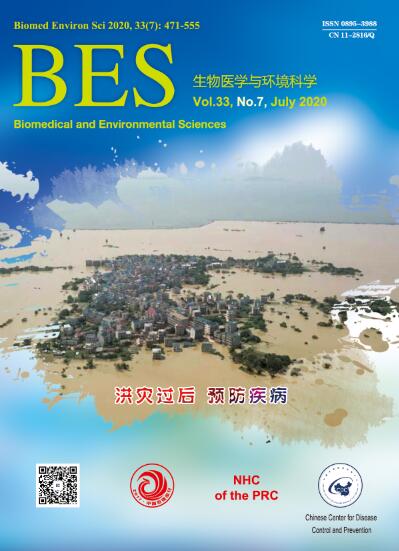


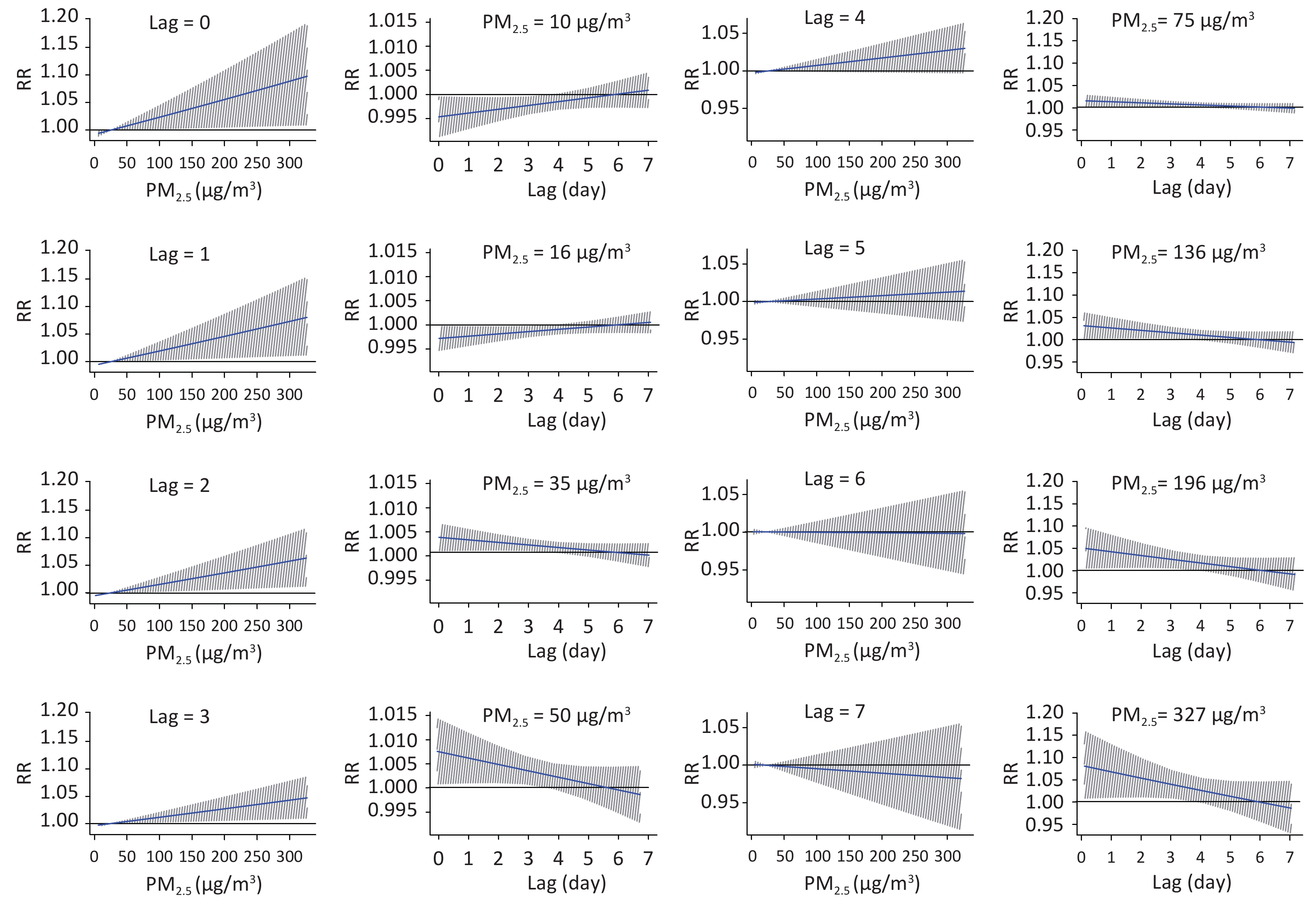

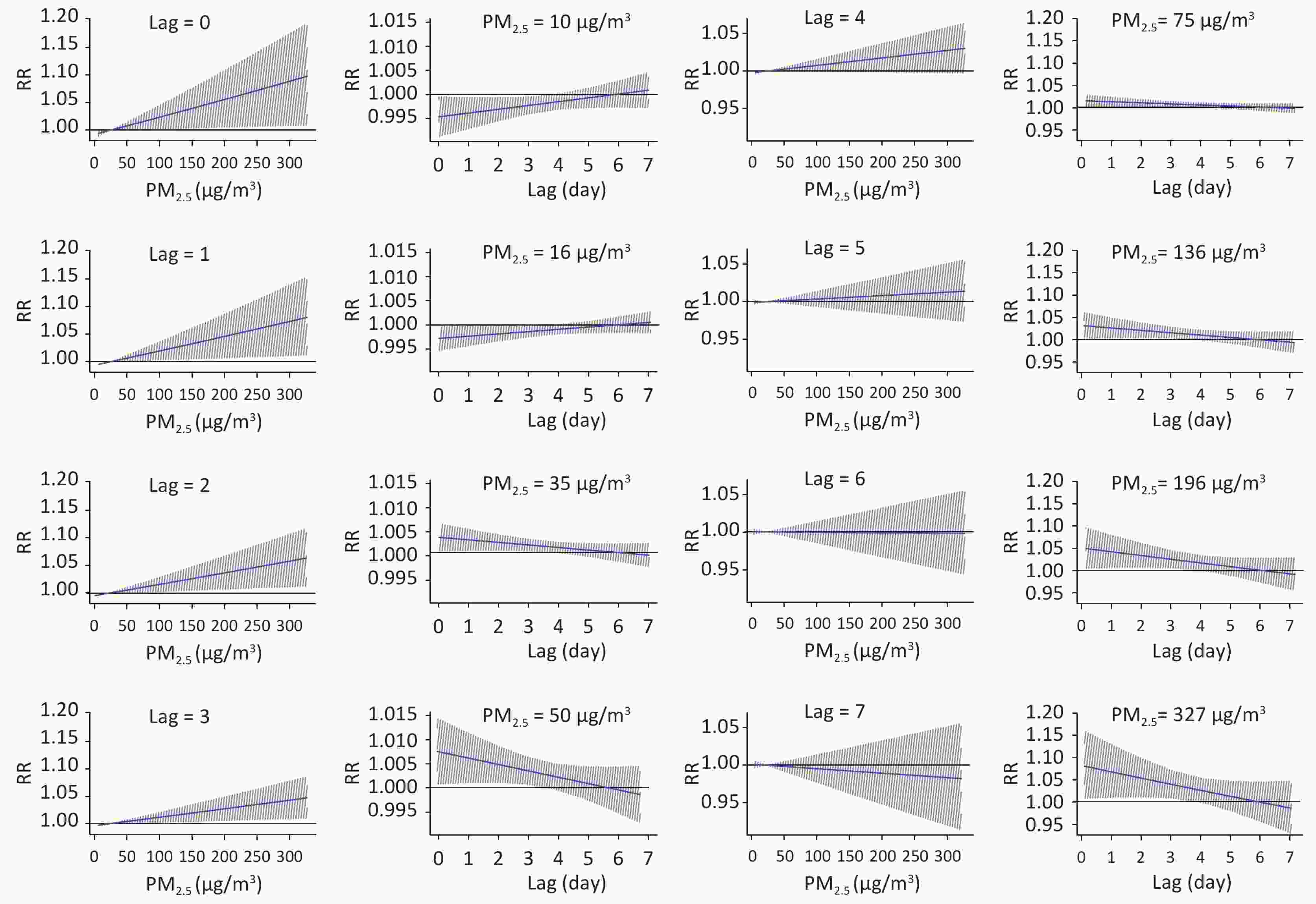
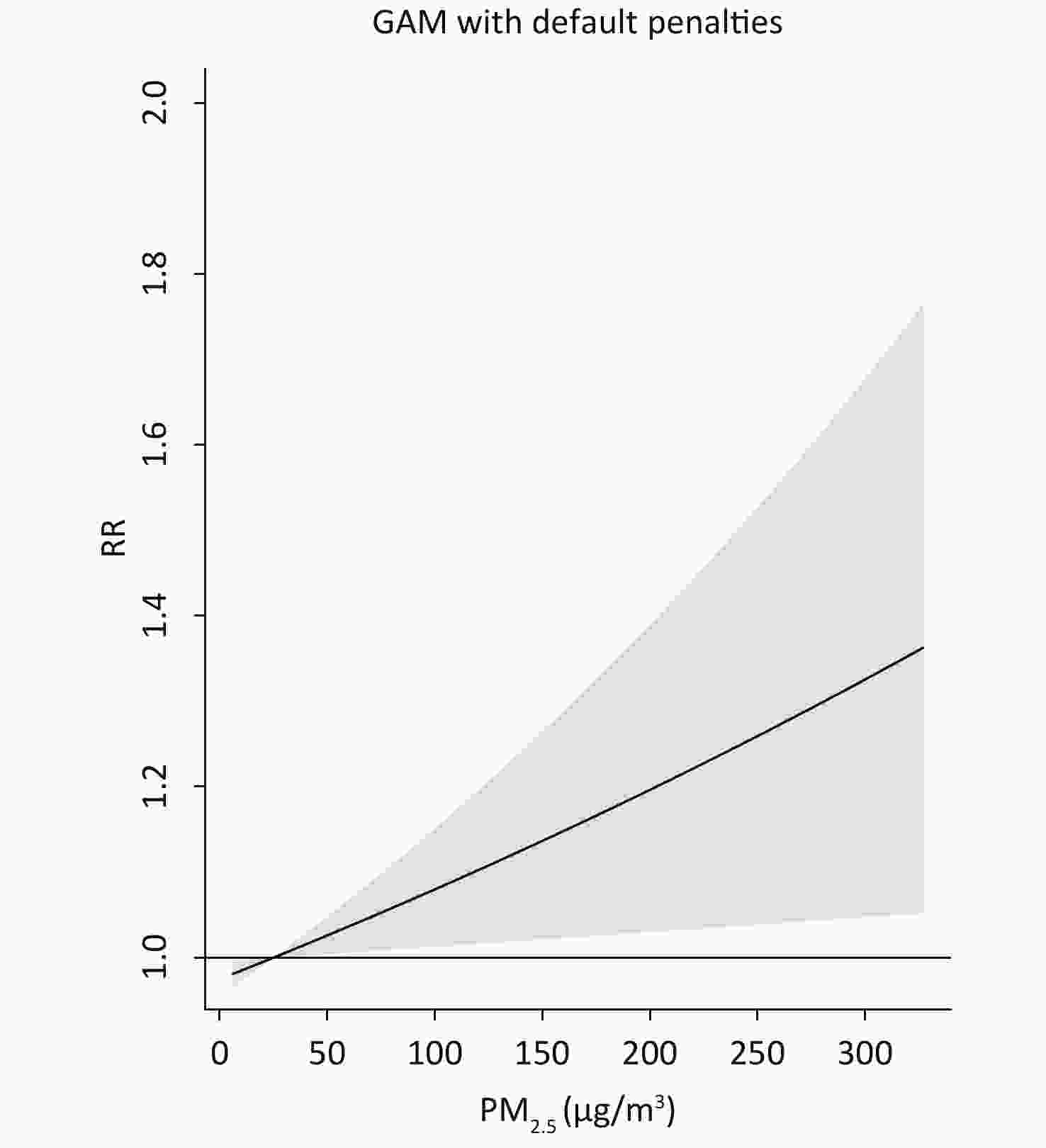
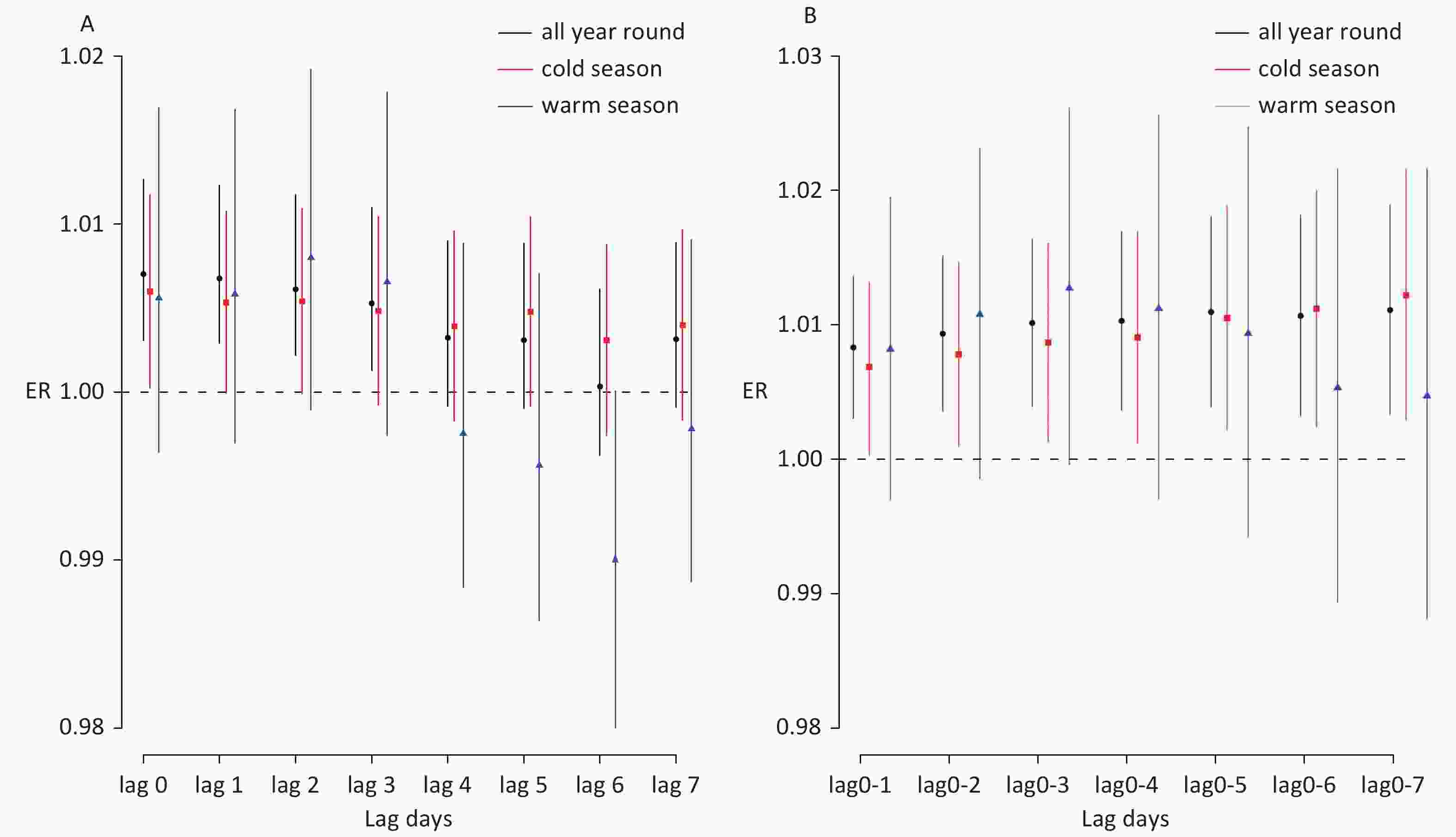

 Quick Links
Quick Links
 DownLoad:
DownLoad:
